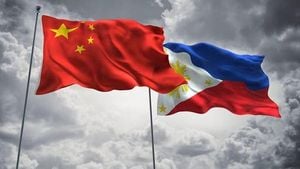The South African Reserve Bank (SARB) has determined to maintain its current interest rate at 7.5%, a decision reflective of ongoing concerns regarding inflation risks and economic uncertainty. Announced by Governor Lesetja Kganyago during a briefing on March 20, 2025, this decision resonates with broader market predictions and highlights the delicate balancing act policymakers face amid fluctuating global conditions.
The Monetary Policy Committee (MPC) debated vigorously before reaching this conclusion, with four members favoring the status quo and two advocating for a reduction. Inflation rates remain within SARB's target range, currently at 3.2%, but ongoing international trade tensions and domestic fiscal challenges are constraining economic momentum. Kganyago stated that while “There are strong reasons for the MPC to reduce borrowing costs... global factors will weigh more.”
For South African consumers and businesses, the maintenance of interest rates means continued high borrowing costs. The rand reacted negatively to the news, slipping by 0.5% to 18.22 per dollar. Analysts now warn that enduring high rates could curtail consumer spending further, squeezing financial flexibility for households already grappling with rising costs.
Political pressures persist, as entities like the GOOD Party push for a decrease in rates to alleviate some financial burden affecting consumers. Brett Herron, the party's Secretary-General, remarked that a bold interest rate cut could stimulate a stagnant economy that has been underperforming for over a decade. However, the MPC’s cautious stance indicates a reluctance to deviate from their inflation-target policy.
Recent data from the Bureau for Economic Research (BER) suggests shifting inflation forecasts, with estimates now projecting consumer inflation to average 4.3% this year—down from an earlier prediction of 4.5%. This slight optimism stands against a backdrop of considerable economic struggle characterized by high unemployment and inequality.
On the operational front, the implications for borrowing are stark. Recent calculations reveal that for individuals with loans of less than R1.6 million, monthly repayments will remain configured at R16,515, a figure unchanged from previous levels. Experts highlight that such elevated costs necessitate prioritizing essential expenditures, further diminishing consumption—a critical catalyst for economic growth.
The Reserve Bank’s decisions are not in isolation but are instead influenced heavily by external economic dynamics. The specter of U.S. trade tariffs under the Trump administration persists as a significant concern, with long-term inflation expectations in the U.S. rising at their fastest pace since 1993. Should the Federal Reserve implement a rate hike, South Africa could similarly face depreciation of the rand, creating additional pressure on the SARB to adjust its policies.
In the midst of this, South Africa's national budget remains a contentious matter. Finance Minister Enoch Godongwana has proposed a 0.5% hike in value-added tax (VAT), expected to take effect in May 2025. Such measures instill apprehension in the populace, further complicating the economic landscape as households prepare for increased expenses.
As the SARB navigates this complex terrain, its responsibility extends beyond mere numbers. Governor Kganyago underscored the importance of stabilizing inflation while considering broader societal impacts. Reflecting on societal attitudes, he stated, “Stabilising inflation remains crucial to restoring confidence” in a population navigating high borrowing costs and economic adversities.
The economic forecast remains tenuous, with GDP expectations for 2025 revised down from 1.5% to just 1.2%. This revision symbolizes the continuous struggle against high inflation and external pressures, all underscoring a complex narrative marked by cautious optimism among analysts and policymakers.
Looking ahead, financial experts advise consumers to brace for ongoing volatility. FNB CEO Harry Kellan emphasized that, in heed of current conditions, caution in financial decisions is imperative. He encouraged households to focus on emergency savings and avoid significant expenditures until clearer signals from fiscal policies materialize.
The intertwining of monetary policy with everyday life emphasizes the wider impact of governmental decisions. Artistic expressions of struggle, resilience, and aspirations are captured vividly in South Africa’s culture, serving as reminders of the socioeconomic dynamics at play. The belief that the economy can recover remains, but it is contingent upon thoughtful policymaking and a collective endurance that withstands the complexities of modern economic challenges.
As policymakers confront pressures from various sectors, the ability to foster an environment conducive to both inflation control and economic growth becomes paramount. The question arises: Can South Africa navigate these turbulent waters without sacrificing economic stability and growth?



